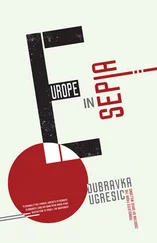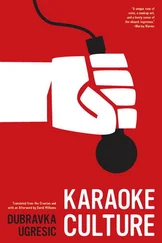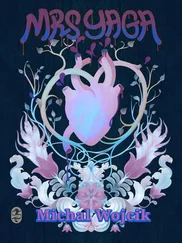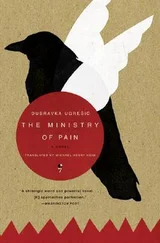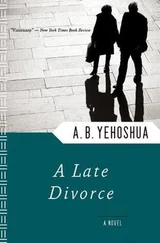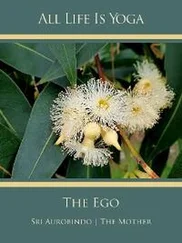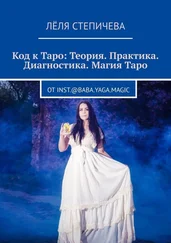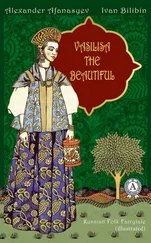The elusive and capricious Baba Yaga sometimes appears as a helper, a donor, sometimes as an avenger, a villain, sometimes as a sentry between two worlds, sometimes as an intermediary between worlds, but also as a mediator between the heroes in a story. Most interpreters locate Baba Yaga in the ample mythological family of old and ugly women with specific kinds of power, in a taxonomy that is common to mythologies the world over.
Along with many points of contact with other ‘babas’, Baba Yaga has earned her own name and individuality. Although Baba Yaga is widespread around the Slavic world, ‘the problems of Baba Yaga’s genesis, mythological nature, function and semantics in fairytales are highly complex and provoke continual debate.’ [14] K. V. Chistov, Zametki po slavjanskoj demonologii, Baba Jaga. Moskva: Zhivaja starina 1997.
Some authors even maintain that the name Baba Yaga is unknown in Slavic mythology, and that she belongs exclusively to the world of fairytales. What’s beyond dispute is that Baba Yaga sprouted in mythological soil, but also that, as a character, she took shape in Russian folktales between the 18th and 20th centuries, when hundreds and hundreds of versions of these tales were written down. Baba Yaga grew out of the complex and long-lasting interaction between folklore and mythico-ritual traditions, the tellers of folktales, folklorists and commentators; out of the blending of Indo-European and pre-Indo-European mythologies. Maria Gimbutas includes Baba Yaga among the ‘goddesses inherited from Old Europe, such as Greek Athena, Hera, Artemis, Hecate; Roman Minerva and Diana; Irish Morrígan and Brigit; Baltic Laima and Ragana; Russian Baba Yaga, Basque Mari, and others, are not “Venuses” bringing fertility and prosperity […]. These life-givers and death-wielders are “queens” or “ladies” and as such they remained in individual creeds for a very long time in spite of their official dethronement, militarisation, and hybridisation with the Indo-European heavenly brides and wives.’ [15] Maria Gimbutas, The Language of the Goddess . London: Thames & Hudson 2001.
Baba Yaga has a fanciful character, and researchers are cautious when it comes to defining her status. Some maintain that Baba Yaga is simply a (Slavic) witch, while others are ready to grant her a much more complex and individualised role in the system of Slavic demonology.
Let us look first at ordinarywitches: who they are, what they look like and what they do. According to Tihomir R. Ðorđević, witches are mainly old women with ‘devilish souls’. ‘A woman is called a witch if she possesses a sort of devilish soul,’ according to Vuk Karadžić, ‘which emerges while she sleeps at night and turns into a butterfly, a hen or a turkey which flies from house to house, eating people up, especially little children: when she finds someone asleep, she hits them with a rod of some kind on the left breast, their chest splits open, she plucks out their heart and eats it, then she closes up the hole again. Some of the victims die straight away, others live on for a while longer, according to her whim as she eats their heart; and then they die, just as she intended.’ [16] Tihomir R. Ðorđević, Veštica i vila u našem narodnom predanju i verovanju . Beograd: Srpski etnografski zbornik 1953.
* * *
Slavic languages have many names for witches: ved’ma, vid’ma, vedz’ma, veštica, veštićina, czarownica, wiedzma, jedza, cipernica, coprnica, štrigna, štriga, morna, brina, brkaća, konjobarka, srkaća, potkovanica, rogulja, krstaća, kamenica, ćarovnica, mag’josnica, and others besides. Synonyms have a protective function, and the protection they offer is mostly used to protect children. People often refer to a witch as she over there, for fear of uttering her name.
Like many other mythical beings, witches have a talent for metamorphosis. (In contemporary popular culture they are ‘morphs’.) A witch can turn herself into a bird, a serpent, a fly, a butterfly, a frog or a cat. [17] In the classic film Cat People (1942), directed by Jacques Tourneur, New York fashion designer Irena Dubrovna is a Serb by extraction. When they are smitten with jealousy or rage, women from the land of her ancestors turn into bloodthirsty wildcats, or in this case panthers, that kill their mates. In the scene that takes place in a New York restaurant, called The Belgrade, an unknown woman recognises Irena Dubrovna and her secret feline self. This woman comes up and says something in Serbian (with a strong American accent, naturally): Ti si moja sestra , meaning ‘You are my sister.’
Most often they turn into a black bird (raven, crow, black hen and magpie). There is also a popular belief that moths are really witches, so it is best to throw them on the fire or scorch their wings. The next day, you need to find out which ‘baba’ in the village ‘got burned in the fire’, ‘roasted right through like a roasted devil’ or simply passed away. That baba is – was – a witch. ‘A hen with scorched feathers, or any other bird that a witch turns into, can also give the witch away.’ There is a sort of moth that is actually called a witch . People believe that any woman who is touched by the wings of this ‘witch’ will be barren.
It was believed that when a witch falls asleep, a butterfly or bird flies out of her mouth, ‘and if she turns over, the butterfly or bird cannot return whence it came, so it will die, and so will the woman. It can happen that the bird or hen flies away, the sleeping woman’s husband turns his wife around so that her head is where her feet were, the hen cannot go back into the woman’s mouth and the woman dies. When the grieving husband puts his wife back in the position she had when she fell asleep, the hen can go back into the woman again, and the woman comes back to life.’ [18] Tihomir R. Ðorđević op. cit.
Witches can be recognised by ‘the wart of some kind that every one of them has on her head, the same as the long cockscomb on a strutting cockerel’. Witches are cross-eyed, they are prone to vomiting (hence the saying ‘He threw up his guts like a witch’) and they don’t sink in water. A witch has the ability to change her physical size, ‘she can make herself absolutely small, so that she can pass through the narrowest crack, through a keyhole, and emerge on the other side.’ (T. R. Ðorđević)
In Herzegovina, a witch is a woman with a moustache ‘like a young man’s first whiskers’. Baba, a character in P. P. Njegoš’s epic poem The Mountain Wreath says: ‘It is an easy thing to recognise a witch: grey hair and a cross under her nose.’ [19] Petar Petrović Njegoš (1813–1851), the Vladika (Prince-Bishop) of Montenegro, was a great poet as well as a ruler and warrior. His verse drama Gorski Vijenac ( The Mountain Wreath ), about a massacre of ‘renegade’, i.e. pro-Turkish, Montenegrins, is a classic of South Slavic literature.
Hence, a witch has ‘big whiskers and hairy thighs’; a witch is ‘plethoric, with a foul temper and a cross under her nose’; witches are always ill-humoured, they always wear an evil expression and they have ‘shaggy legs’. A witch is ‘whiskery, with bushy eyebrows, bent-backed, her eyes sunk deep in her head’. A witch has ‘thin little moustaches, bloodshot eyes and sharp teeth, but the moustache is the surest sign’. Hairiness is not such an issue in Bosnia. On the contrary, the Bosnians maintain that a witch is ‘a woman with no hair in her armpits or her lower body’. [20] This lack of hair even features in Roald Dahl’s popular children’s story The Witches , where baldness is one of the clues that a woman is a witch. (‘That is why they have claws and bald heads and queer noses and peculiar eyes…’) Which is why witches all wear wigs to hide their real identity.
Читать дальше

